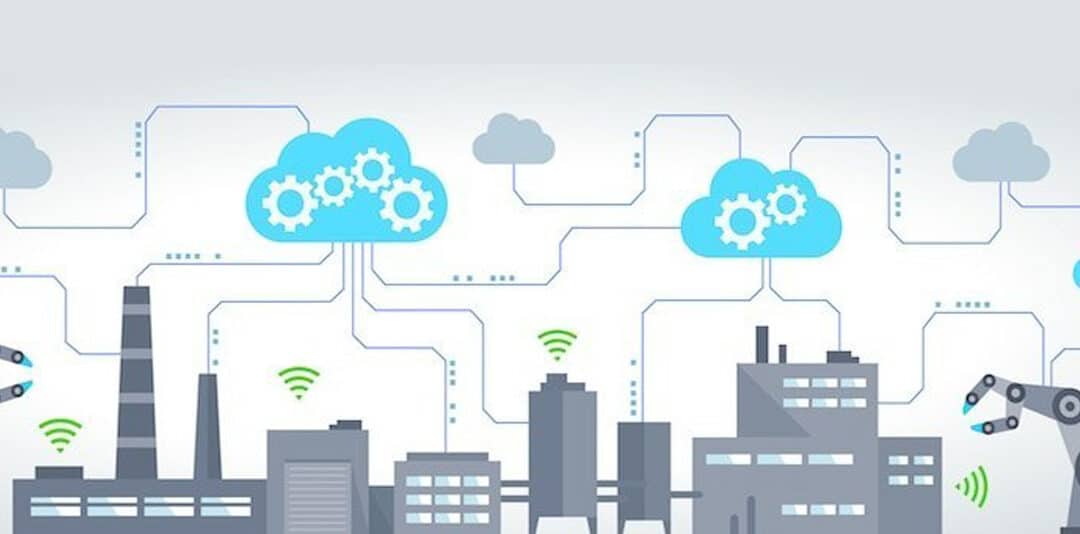
by Jon Rabinowitz | Mar 23, 2018 | Energy, ICT
A client of ours recently installed energy sensors across two areas of their facility. One area is significantly old using good practice equipment for the time, the other brand new and utilising advancements in equipment technology. Both areas are similarly sized and perform the same operation, however, measuring energy performance between the old and new will provide our client with real insights when making future strategic decisions.

While our client operates a large portfolio of facilities around the North Island, they are using this specific site as a sandbox environment, a testbed to trial new initiatives as they look to upgrade and replace existing equipment at their other facilities.
Utilising real-time energy data to measure performance against a range of benchmarks will allow them to verify performance gains and deliver insights into which areas should be prioritised in their long-term business plan.
Non-intrusive wireless energy sensors that can be easily moved to measure other areas, combined with powerful cloud-based software reporting tools provide a cost-effective and flexible way to build business cases.
The following article, written by Jon Rabinowitz at Panoramic Power, highlights the fact that, with Internet of Things (IoT), businesses can now test ideas in a quick and cost-effective manner while collecting valuable data for future decision making.
The Internet of Things has exploded onto the scene and with it a slew of potential business applications. In navigating this terra nova, most decision makers take their cues from the competition, afraid of wading too far into the unknown. This is reasonable, of course, but it’s also a big mistake.
Smart business owners and managers should know that they don’t need to resign themselves to the role of a follower in order to hedge their bets and mitigate their exposure to risk. You can lead and be cautious at the same time!
A False Dichotomy in Applied Internet of Things Investment
Consider, for example, the business value of smart, self-reporting assets. These assets hold the promise of constantly refined operational processes, reduced maintenance costs (as issues are caught and corrected in the earliest stages before degradation occurs), extended lifecycles and the elimination of unplanned downtime.
Still, few things ever go exactly according to plan and deliver quite as advertised. So it’s understandable that prudent decision makers might set expectations below the promised value. Add to that the fact that overhauling and replacing the entirety of your asset infrastructure is incredibly expensive and a terrible disruption to operations.
It’s easy to see why some business owners and managers might prefer to sit back and let “the other guys” take the lead in implementing Internet of Things into their business operations. But easy to see and right are two very different things.
The right approach is significantly more nuanced, as the rationale presented above is built on a false dichotomy. Your choice isn’t between sitting back and doing only what the other guy already succeeded at or totally replacing all your critical assets. There’s a world of options spanning the divide between those two.
The Golden IoT Mean: New Operational Intelligence, Old Equipment
Science and technology are both predicated on the principle of testing and your business should be the same. It always makes sense to “pilot” new technologies or techniques before deploying them at large. Beyond that though, using advanced Internet of Things technologies and tools, you can infuse new operational intelligence into old equipment without replacing anything.
Until your industry has reached a “mature” state in its development and integration of IoT technologies, this is the best way to mitigate risk without forfeiting access to value while it’s still a comparative advantage.
Using smart, non-intrusive energy sensors – each about the size of a 9-volt battery – you could retrofit past-gen assets to enable next-gen operational intelligence. Simply snap a sensor onto the circuit feeding the intended asset. No need to suspend operations; no need for complicated installation.
After your sensors are in place, enter the corresponding ID numbers into the mapping console. Immediately, these sensors will begin reporting granular energy data, pumped through an advanced, machine-learning analytics platform, and turning out new operational intelligence to be acted upon.
In this manner, facility managers can give a voice to their critical assets, allowing for advanced operational automation, predictive maintenance and generally increased production.

by Jon Rabinowitz | Feb 16, 2018 | Energy, ICT
In the past couple of years, we have written a lot of commentary about how the world of IT and the world of Energy are converging. As more and more companies are choosing not to own and operate their IT, the role of IT departments is fast moving away from just technical support towards strategic thinking informed by data analysis. The same can be said for Energy as companies gain access to wireless energy monitoring via cloud-based analytics, CIO’s and IT managers have equal interest as COO’s and plant managers as the Internet of Things is rolled out.
 The convergence of data across all areas of a business is quickly growing and how this data is used to inform executive as well as operational level decision making and planning. In the last 12 months, Total Utilities has installed several hundred wireless energy sensors around New Zealand. Data from these energy sensors are being used across numerous areas from cost allocation, performance and product benchmarking, energy efficiency, sustainability reporting, preventative maintenance and tenant rebilling.
The convergence of data across all areas of a business is quickly growing and how this data is used to inform executive as well as operational level decision making and planning. In the last 12 months, Total Utilities has installed several hundred wireless energy sensors around New Zealand. Data from these energy sensors are being used across numerous areas from cost allocation, performance and product benchmarking, energy efficiency, sustainability reporting, preventative maintenance and tenant rebilling.
The following article was written by Jon Rabinowitz and underlines the need for cross-section planning and acceptance to ensure IoT success. Total Utilities can help your business through this planning process to ensure that key stakeholders are part of your IoT journey.
The most effective way to derive value from sensor technology and big data is to ensure you can analyze and act on the information gathered.
When sensors are deployed as data capture/communication instruments and paired with best-in-class Big Data analytics, the result is the life breath of value-driven Internet of Things technology. Unfortunately, more often than not, IoT systems are rolled out without proper planning, and simply so some manager can check a box and say that he or she undertook an IoT initiative.
When organizations are driven by hype, that value-generating substance generally falls by the wayside. Too often this is the case with IoT projects pursued for their buzz-worthiness, without due attention paid to the smart sensor and Big Data nuts and bolts of the thing.
Indeed, IoT for IoT’s sake can only get you so far. Ganesh Ramamoorthy, a principal research analyst at Gartner, told The Economic Times that “8 out of 10 IoT projects fail even before they’re launched.” If we’re to believe that figure, it begs the question, what are companies doing wrong?
Why Companies Fail In Putting Sensors and Big Data to Work
Compelled by topical hype, there’s often a sense of urgency associated with IoT projects. According to Mark Lochmann, a senior consultant at Qittitut Consulting, that self-imposed urgency gets the best of organizations. In an interview with IndustryWeek, Lochmann explains that many enterprises “dive headfirst” into Internet of Things projects without really understanding how the technology affects their operations.
Too often decision-makers get themselves drunk on buzz and embark on technology rollouts, without really understanding what needs to happen and how that tech needs to tie back into business operations in order to derive value. They simply neglected to consider how installing hundreds, possibly thousands of sensors across their business is supposed to portend an improved bottom line.
To avoid missteps, be sure to consider the following practical factors:
- Where the sensors will process the data (point of creation, edge devices, in the Cloud, etc.)
- Which tools analysts need to visualize and interpret data.
- How the company will validate and cleanse sensor information.
- The data governance policies which will protect data.
- The infrastructure necessary to support analysis (data warehousing, data mart, extract transport load servers, etc.).
Lacking wherewithal on these basic project components, research from PricewaterhouseCoopers and Iron Mountain reveals that only 4% of enterprises “extract full value” from the data they own. However, it’s not just planning that’s holding companies back either. The same study found that an additional 36% of businesses were hamstrung – regardless of how thoroughly they’d thought through the project – due to system and resource limitations.
That paints a rather bleak picture, but there’s no reason to despair. The above statistics notwithstanding, there remains plenty that conscientious managers can do to ensure the success and of their integrated sensor and Big Data initiatives.
Start With Specific Use Cases, Then Dig Deeper
Many organizations don’t know how sensors and big data will impact their data centres.
Managers leading sensor and Big Data projects need to outline specific use cases before even thinking about implementation.
A smart manager will have a firm handle on how such technology is likely to impact operations on a day-to-day level – not based on intuition or imagination but on data. Better yet, that manager will set very specific expectations, delivery processes and timelines for what he or she wants to achieve on the back of sensor and big data technology.
For example, let’s say you want to install advanced wireless sensors in your facility. The person leading the project should explicate his or her intention to leverage collected data in order to:
- Diagnose problems with equipment to predict failures.
- Analyze the production efficiency of each asset.
- Determine how many tons of material you process on an hourly basis.
- Monitor worker health and locations across the facility.
Of course, not all data is equal and the lion’s share of that discrepancy will depend on the data type. Data pertaining to equipment functionality, it should be understood, is among the most important and time-sensitive. Such data should be processed immediately given that it can tell the story, in real time, of costly malfunctions.
Some of your data will demand review in real-time, some every half hour and some every other month. Most will find itself living between those poles. Regardless of the data type though, you’ll need to be sure that when you consult it, it conveys something that is actually meaningful and actionable. For this, you’ll need to plan out and gain relative mastery over your processing system.
This means carefully choosing an analytics solution or a combination of complementary solutions. It may also mean hiring an in-house data scientist or simply bringing in outside help for training purposes. In some cases, it will even mean building out an on-site information network. In every case, it will mean instilling a data- and value-driven culture, where employees not only have access to tools but know when and how to properly use them.
Remember, there’s no such thing as too much research and that hype can be as dangerous as it is enticing. Bearing that in mind, the world of IoT is big and wide and waiting for you!

by Jon Rabinowitz | Jun 9, 2017 | Energy
The focus of the recent Energy Management Association of New Zealand (EMANZ) conference held in Wellington centered on disruptive technologies and how this would impact the traditional models of the energy supply chain. While presentations focused mainly on generators, distributors and retailers, customers also need to consider how emerging technology can drive strategic decision making when it comes to the consumption of energy.
The installation of smart metering over the last few years throughout New Zealand has assisted mainly companies that generate, distribute and retail energy with very little benefit being delivered to customers. In the retail space we are starting to see the application of time based pricing for SME customers but retail pricing products in this space remain in their infancy as the attitude of traditional suppliers appears to be a wait and see approach.
One thing is for certain, data will play a massive role in the future structure of energy supply and customers who control their data will be steps ahead of those that don’t. We truly believe that customers who take a proactive strategic approach to measuring consumption beyond the data available on their invoices (whether it be energy, ICT or waste) will have a competitive advantage in their market place compared with businesses who don’t.
The below article was written by Jon Rabinowitz, Head of Marketing – Panoramic Power, while US-centric there are strong commonalities that apply to the market in NZ. If your business would like to discuss how energy can become a strategic lever for competitive advantage, Total Utilities would welcome the opportunity to meet with you. Contact us here.
(more…)





